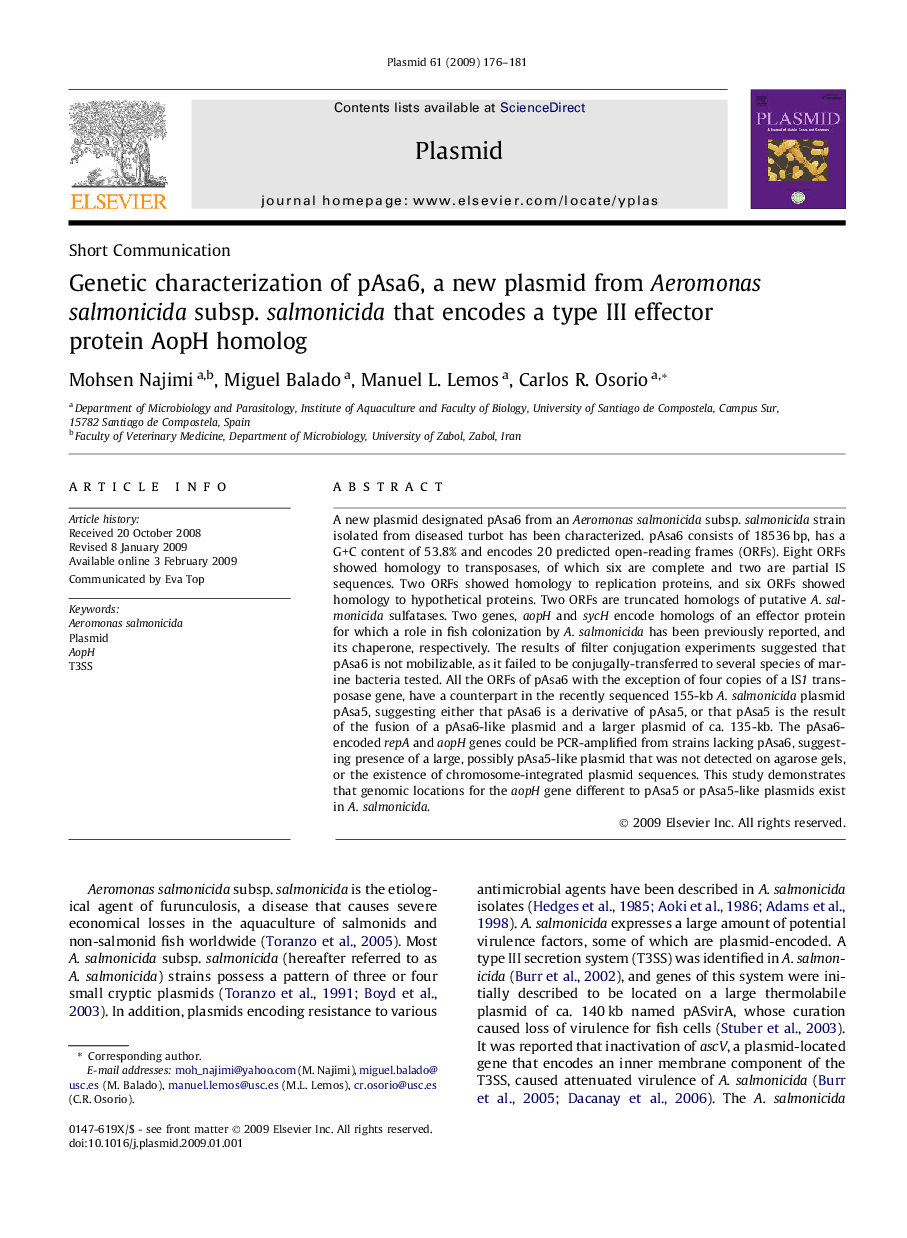| Article ID | Journal | Published Year | Pages | File Type |
|---|---|---|---|---|
| 2824394 | Plasmid | 2009 | 6 Pages |
Abstract
A new plasmid designated pAsa6 from an Aeromonas salmonicida subsp. salmonicida strain isolated from diseased turbot has been characterized. pAsa6 consists of 18536Â bp, has a G+C content of 53.8% and encodes 20 predicted open-reading frames (ORFs). Eight ORFs showed homology to transposases, of which six are complete and two are partial IS sequences. Two ORFs showed homology to replication proteins, and six ORFs showed homology to hypothetical proteins. Two ORFs are truncated homologs of putative A. salmonicida sulfatases. Two genes, aopH and sycH encode homologs of an effector protein for which a role in fish colonization by A. salmonicida has been previously reported, and its chaperone, respectively. The results of filter conjugation experiments suggested that pAsa6 is not mobilizable, as it failed to be conjugally-transferred to several species of marine bacteria tested. All the ORFs of pAsa6 with the exception of four copies of a IS1 transposase gene, have a counterpart in the recently sequenced 155-kb A. salmonicida plasmid pAsa5, suggesting either that pAsa6 is a derivative of pAsa5, or that pAsa5 is the result of the fusion of a pAsa6-like plasmid and a larger plasmid of ca. 135-kb. The pAsa6-encoded repA and aopH genes could be PCR-amplified from strains lacking pAsa6, suggesting presence of a large, possibly pAsa5-like plasmid that was not detected on agarose gels, or the existence of chromosome-integrated plasmid sequences. This study demonstrates that genomic locations for the aopH gene different to pAsa5 or pAsa5-like plasmids exist in A. salmonicida.
Keywords
Related Topics
Life Sciences
Biochemistry, Genetics and Molecular Biology
Genetics
Authors
Mohsen Najimi, Miguel Balado, Manuel L. Lemos, Carlos R. Osorio,
